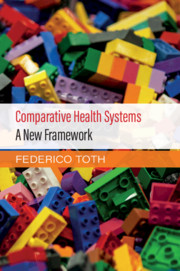Book contents
- Comparative Health Systems
- Comparative Health Systems
- Copyright page
- Dedication
- Contents
- Figures
- Tables
- Acknowledgments
- Acronyms
- Introduction
- 1 Seven Financing Models
- 2 Funding Healthcare
- 3 Healthcare Expenditure and Insurance Coverage
- 4 Healthcare Provision
- 5 Financing and Provision
- 6 Hospitals, Doctors and Nurses
- 7 Healthcare Reforms over the Last Thirty Years
- 8 Health Politics
- Conclusions
- References
- Index
4 - Healthcare Provision
Integrated versus Separated Systems
Published online by Cambridge University Press: 20 August 2021
- Comparative Health Systems
- Comparative Health Systems
- Copyright page
- Dedication
- Contents
- Figures
- Tables
- Acknowledgments
- Acronyms
- Introduction
- 1 Seven Financing Models
- 2 Funding Healthcare
- 3 Healthcare Expenditure and Insurance Coverage
- 4 Healthcare Provision
- 5 Financing and Provision
- 6 Hospitals, Doctors and Nurses
- 7 Healthcare Reforms over the Last Thirty Years
- 8 Health Politics
- Conclusions
- References
- Index
Summary
In Chapter 4, an attempt is made to classify national systems of healthcare delivery on the basis of their degree of organizational separation/integration. For this purpose, two opposing models are outlined: the integrated and the separated models. In order to bring into focus the main differences between the integrated model and the separated model, the use of the following dimensions is proposed: (1) insurer-provider integration; (2) primary and secondary care integration; (3) the presence or absence of gatekeeping mechanisms; (4) the greater or lesser freedom of patients in choosing their providers; (5) the individual or group practice of general practitioners. The twenty-seven countries considered in this research are distributed fairly evenly along the entire separation/integration axis. The majority of SHI systems have characteristics that arecloser to the separate model, while the majority of universalist countries are more oriented toward the integrated model. However, the association between the financing model and the provision model is by no means automatic.
Keywords
- Type
- Chapter
- Information
- Comparative Health SystemsA New Framework, pp. 88 - 110Publisher: Cambridge University PressPrint publication year: 2021



